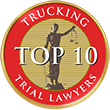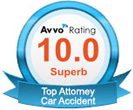
These are some of the common (and less common) types of truck accidents. To learn more about a specific truck accident type, click on its heading to see more information.
Rear-ending Another Vehicle
A truck hitting the rear end of another vehicle is among the most common kinds of truck accidents. It often happens when the other vehicle is stopped at a red light or stop sign, or is slowing down. This is why it’s crucial for 18-wheelers, dump trucks, or other large trucks to avoid following too closely or driving too fast. Other factors that lead to rear-ending wrecks are driver inattention and driver fatigue.
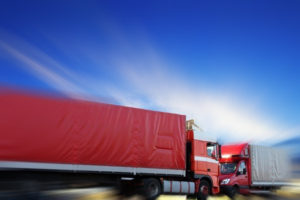 Head-On Crash
Head-On Crash
When a truck and another vehicle move from opposite directions toward each other, their front ends or parts could collide in a head-on accident. Most often, this happens on straight roads, when one of these vehicles unintentionally crosses into oncoming traffic. Other typical factors that contribute to head-on collisions are speeding and distracted driving. When large trucks are involved – given their size and weight – the results are commonly dire, including severe injuries or death, especially among occupants of smaller vehicles.
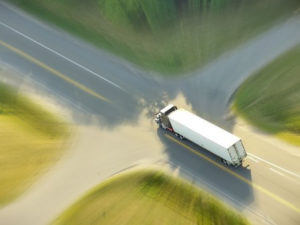 Intersection Collision
Intersection Collision
A truck crash at an intersection has a greater serious injury potential than other truck accident types. Intersection crashes are typically caused by right-of-way violations such as running a red light or stop sign, or not yielding during a left turn. Additionally, big trucks such as semis or tractor-trailers can also invite an intersection accident when they obstruct the path of other vehicles at certain turns.
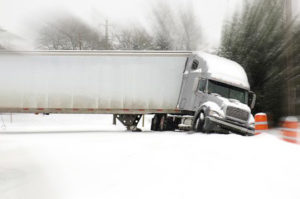 Jackknifing
Jackknifing
A jackknife accident occurs when a tractor and its trailer fold toward each other while traveling, comparable to how a jackknife or pocketknife folds. The tractor and the trailer could possibly crash together. Furthermore, a truck that is jackknifing can crash with other vehicles, or obstruct the road and lead to multi-vehicle pileups. Such a catastrophic accident is often the result of overly hard braking by 18-wheelers, especially in bad weather conditions when the roads are slippery.
Rollover
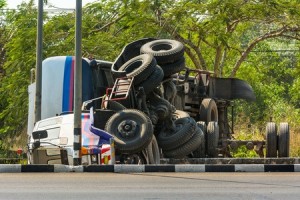 Huge vehicles, particularly tankers, have a high center of gravity that makes them more prone to roll over. Some common factors that add to this risk are speeding, driving too fast at a curve, and inattentive driving. Other factors are cargo shifting, bad weather conditions like crosswinds, and truck design, such as with shorter trucks.
Huge vehicles, particularly tankers, have a high center of gravity that makes them more prone to roll over. Some common factors that add to this risk are speeding, driving too fast at a curve, and inattentive driving. Other factors are cargo shifting, bad weather conditions like crosswinds, and truck design, such as with shorter trucks.
Sideswiping/Lane Change Accident
Truck drivers need strategically placed mirrors to see what’s beside and behind their large trucks. But because of the sheer size of tractor-trailers and similar trucks, they still have large blind spots that are not included in the driver’s vision. So during a lane change, a trucker may not be able to see a vehicle in the adjacent lane, resulting in the truck sideswiping that vehicle. Modern technology offers more ways to prevent sideswipes accidents, such as lane departure warnings and side-mounted cameras, but many trucks have yet to be equipped with these.
Truck Accidents Due to Turn Collisions
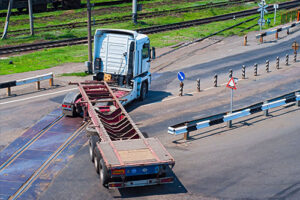 Large trucks need more room when making turns, hence a truck driver’s improper turning and negligence can lead to severe injuries for other motorists. According to the National Highway Traffic Safety Administration (NHTSA), in 2021, truck-related accidents caused the death of 5,788 people. From these accidents, one of the crash factors that the agency highlighted was large trucks turning left or right.
Large trucks need more room when making turns, hence a truck driver’s improper turning and negligence can lead to severe injuries for other motorists. According to the National Highway Traffic Safety Administration (NHTSA), in 2021, truck-related accidents caused the death of 5,788 people. From these accidents, one of the crash factors that the agency highlighted was large trucks turning left or right.
Were you or a family member hurt in a turn collision involving a truck? In the KCMO area, Flick Law Firm can help you claim compensation. Don’t hesitate to contact us for a free consultation.
Work Zone Truck Accidents
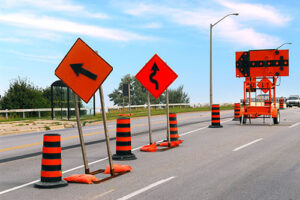 Work zones on roadways can create hazardous conditions for both construction crews and nearby motorists. The Federal Highway Administration reports that a significant contributor to these accidents is the involvement of trucks. In 2021, for example, over 33 percent of fatal crashes at work zones involved commercial motor vehicles such as large trucks.
Work zones on roadways can create hazardous conditions for both construction crews and nearby motorists. The Federal Highway Administration reports that a significant contributor to these accidents is the involvement of trucks. In 2021, for example, over 33 percent of fatal crashes at work zones involved commercial motor vehicles such as large trucks.
Accidents in construction zones can also include construction vehicles such as dump trucks, loaders, cranes, and others, especially during their entry or exit from the construction area. Additionally, incidents may occur with parked construction vehicles, leading to sideswipe accidents along the roadside.


